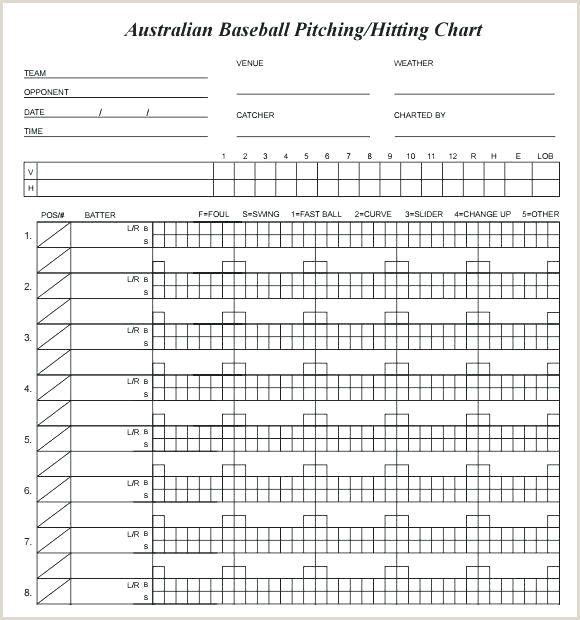Home »
Misc »
How to read a basketball score sheet
How to read a basketball score sheet
How to Keep a Basketball Score Sheeet
How to Keep a Basketball Score Sheet
Keeping track of the score in basketball games is something that every person involved in the sport does, even if you are just an avid fan watching the match.
But basketball also includes detailed statistical categories other than the points a team compile when they successfully put the ball into the hoop. If you are tasked to be a scorekeeper, you also have to tally rebounds, assists, steals, blocks, turnovers and other important numbers essential in the rules of basketball.
This is not just one of those easy drills as the stats has to be accurate and should not include any discrepancy. If you are new to filling out a basketball stat sheet or you just want to refresh your knowledge of it, then read on as we go through the basics of basketball statistics.
Writing down the players' names and numbers
The first category to fill out consists of the names of the players and their jersey numbers, as well as the names of the coaches.![]() You write down their names on the longest boxes you can see on the stat sheet, then place their numbers on their corresponding small boxes. The boxes for the coaches' names are usually located at the top, right beside the names of the teams. You have to be accurate in writing down their numbers because the referees will do a hand signal of a player's number when he commits a foul.
You write down their names on the longest boxes you can see on the stat sheet, then place their numbers on their corresponding small boxes. The boxes for the coaches' names are usually located at the top, right beside the names of the teams. You have to be accurate in writing down their numbers because the referees will do a hand signal of a player's number when he commits a foul.
Moreover, the number printed at the back of a player's jersey is usually the largest one you can see on his uniform, making it easier for you to tally his points when he scores. In terms of the sequence of the players' names, you can list them down numerically so that you can find them on the stat sheet more quickly. After that, you should mark with an asterisk the starting line-up of each team or basically the first five players fielded in by the coaches. You can do this first category of the stat sheet by yourself, or you can ask the coaches or the managers to write them down for you.
Marking Change of Possesion on a Basketball Stat Sheet
Another important non-statistical category in basketball stat sheets is marking the change of possessions. This occurs in jump-ball situations, but there is a big difference between amateur and professional leagues. In amateur leagues, teams only jump for the ball at the start of the game and to begin an overtime period.
This occurs in jump-ball situations, but there is a big difference between amateur and professional leagues. In amateur leagues, teams only jump for the ball at the start of the game and to begin an overtime period.
If there is a situation when there is a tie-up for the ball, the referees will refer to the scorekeeper to see which team will be rewarded with the possession. That is the main reason why you should be careful in marking this category. It is usually located at the top right corner of basketball stat sheets, in which you encircle the squad who won the first possession.
After that, you then just draw a line through each squad so that you would easily know who will be rewarded with the next possession.
Keeping track of team and individual player points
Now, we dive deep on most vital stat: points. It is the primary reason why we have a stat sheet in basketball. Two essential things to consider is that points are separated into two: team points and individual player points.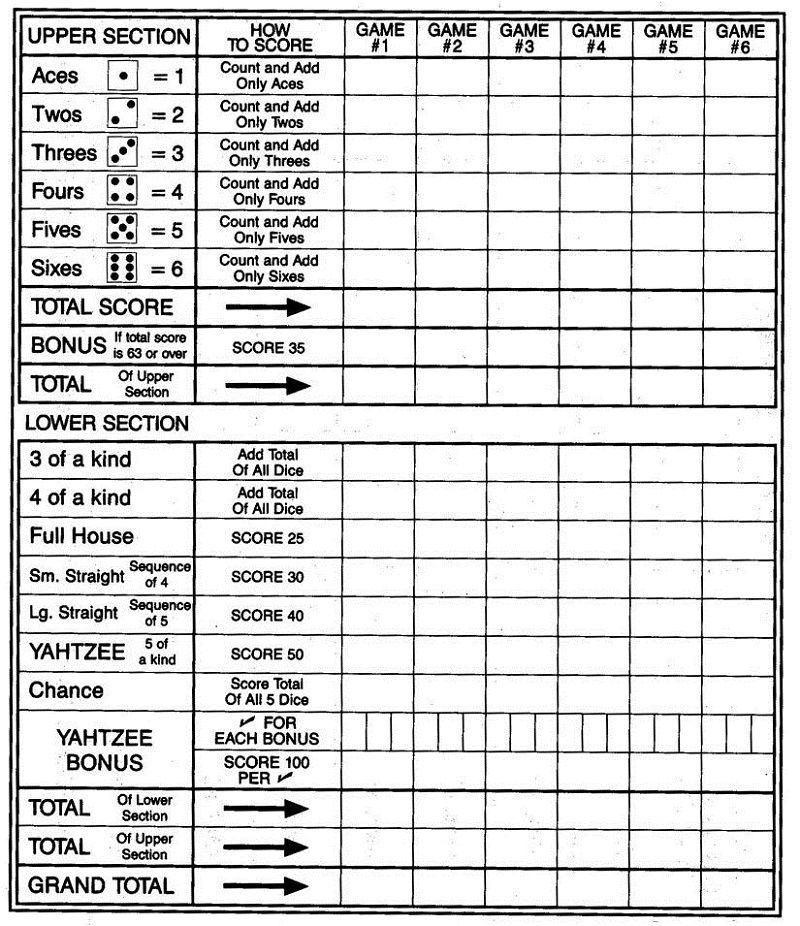 You record team points through the Running Score section. When a player scores, you just put a slash mark in the corresponding box to keep track of teams' total points. As soon as a quarter ends, you will put the teams' total points in the Quarter Score section. After you record each made basket in the Running Score section, you then proceed to the players' points section. When a player makes a two-point basket, you just write "2" in the box. You write "3" when he successfully hits a three-pointer, then "1" for each free throw made. The individual scores are divided by the four quarters, which means that you have to record somebody's stats under the corresponding quarter.
You record team points through the Running Score section. When a player scores, you just put a slash mark in the corresponding box to keep track of teams' total points. As soon as a quarter ends, you will put the teams' total points in the Quarter Score section. After you record each made basket in the Running Score section, you then proceed to the players' points section. When a player makes a two-point basket, you just write "2" in the box. You write "3" when he successfully hits a three-pointer, then "1" for each free throw made. The individual scores are divided by the four quarters, which means that you have to record somebody's stats under the corresponding quarter.
Recording team and individual player fouls and timeouts
Yet, that is not where basketball stat sheets end. The next critical category you have to track is the fouls. Just like in the scoring section, there are team fouls and players' fouls. When a referee calls a foul, immediately record it at the teams' fouls section so that you would know if they hit the penalty situation. As for the individual fouls, you can see the boxes of the personal fouls beside the scoring section for the players. If someone commits a personal foul, put a slash mark on the "P1" box in the section. If he reaches five fouls, you have to inform the referees because it means that he has fouled out of the game and is not allowed to continue playing. You can also see the technical foul boxes in this section. Should someone be called for a technical foul, put a slash mark on the "T1" box. Bear in mind that a technical foul is also counted on the five allowed fouls for each player, and two technical fouls means that he is ejected from the game. Also, be reminded that timeouts are recorded in the stat sheet. This category is located at the Teams are usually allowed seven timeouts in games, and two timeouts for every quarter. Make sure you got this right so that coaches would know if they have already used up their allowed timeouts.
As for the individual fouls, you can see the boxes of the personal fouls beside the scoring section for the players. If someone commits a personal foul, put a slash mark on the "P1" box in the section. If he reaches five fouls, you have to inform the referees because it means that he has fouled out of the game and is not allowed to continue playing. You can also see the technical foul boxes in this section. Should someone be called for a technical foul, put a slash mark on the "T1" box. Bear in mind that a technical foul is also counted on the five allowed fouls for each player, and two technical fouls means that he is ejected from the game. Also, be reminded that timeouts are recorded in the stat sheet. This category is located at the Teams are usually allowed seven timeouts in games, and two timeouts for every quarter. Make sure you got this right so that coaches would know if they have already used up their allowed timeouts.
Tallying assists, rebounds, steals, blocks, turnovers and field goal attempts
Then, there are the other individual basketball stats that you have to keep track of if the tournament's committee deems it necessary.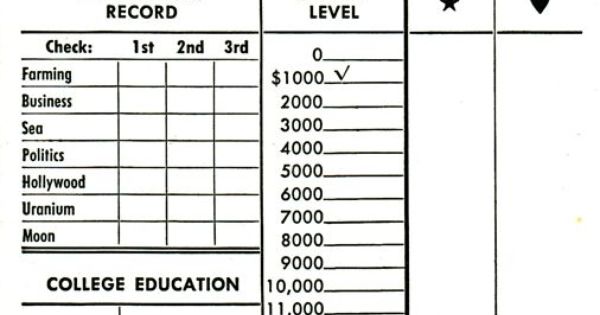 Usually, basketball stat sheets just record points and fouls under the individual categories. However, there is also the possibility that you need to mark down a player's assists, rebounds, steals, blocks, turnovers and field goal makes and misses. Today's coaches have been very mindful of these statistics as a helpful tool in figuring out the strengths, weaknesses and tendencies of their hoopers. But the thing is you cannot track all these stats alone so you have to ask help from two or three more people to watch the plays and mark down the stats.
Usually, basketball stat sheets just record points and fouls under the individual categories. However, there is also the possibility that you need to mark down a player's assists, rebounds, steals, blocks, turnovers and field goal makes and misses. Today's coaches have been very mindful of these statistics as a helpful tool in figuring out the strengths, weaknesses and tendencies of their hoopers. But the thing is you cannot track all these stats alone so you have to ask help from two or three more people to watch the plays and mark down the stats.
We start with tracking each player's assists. Usually, point guards are the ones who tally the most assists but basketball has become a positionless game so everyone has the chance to dish out assists. When a player passes the ball to his teammate, who then successfully scores, you immediately mark a slash mark on the assists category of that hooper who passed the ball. Another important stat in basketball is the rebounds. Coaches would always say that a team controls games by controlling the rebounds. As the stats tracker, you have to be alert in identifying which player made the rebound, whether it be on offense or defense. Same with the assists, you just have to put a slash mark at the rebounds category and then just add it up for the total number of rebounds after the game. The next stat categories are defensive stats such as steals and blocks. These defensive stats act as excellent barometer for how players exert tremendous effort on defense, something that has been very underrated because most aspiring basketball athletes only want to score. Again, whenever a defensive player steals the ball or disrupts the passing lane and tips the ball to his teammate, put another slash mark on his corresponding steals section. On the other hand, if defensive players successfully blocks a shot from the opposing team, you just have to do the slash mark you did in the assists, rebounds and steals category.
Coaches would always say that a team controls games by controlling the rebounds. As the stats tracker, you have to be alert in identifying which player made the rebound, whether it be on offense or defense. Same with the assists, you just have to put a slash mark at the rebounds category and then just add it up for the total number of rebounds after the game. The next stat categories are defensive stats such as steals and blocks. These defensive stats act as excellent barometer for how players exert tremendous effort on defense, something that has been very underrated because most aspiring basketball athletes only want to score. Again, whenever a defensive player steals the ball or disrupts the passing lane and tips the ball to his teammate, put another slash mark on his corresponding steals section. On the other hand, if defensive players successfully blocks a shot from the opposing team, you just have to do the slash mark you did in the assists, rebounds and steals category. Coaches put a lot of emphasis in their squad's defense, so expect them to really dive deep in looking at their players' steals and blocks tally.
Coaches put a lot of emphasis in their squad's defense, so expect them to really dive deep in looking at their players' steals and blocks tally.
Then their are the other stats like field goal attempts and turnovers. Coaches would want to know how efficient their players are shooting the basketball, which is the main reason why you also have to tally how many times a hooper has shot the ball. Shots are divided by three sections: two-point shots, three-pointers and free throws. Also be reminded that you don't just keep track of how often a player shoots the ball. You should also mark how many times he has successfully put the basketball into the hoop. Through this, his coaches will be able to know how well he is shooting the basketball. Lastly, you also have to track players' turnovers as this is another barometer that tells how teams are executing their offensive plays during the games. When a player is handling the basketball then the defender from the opposing team steals it from him, that is automatically a tally in his turnovers count.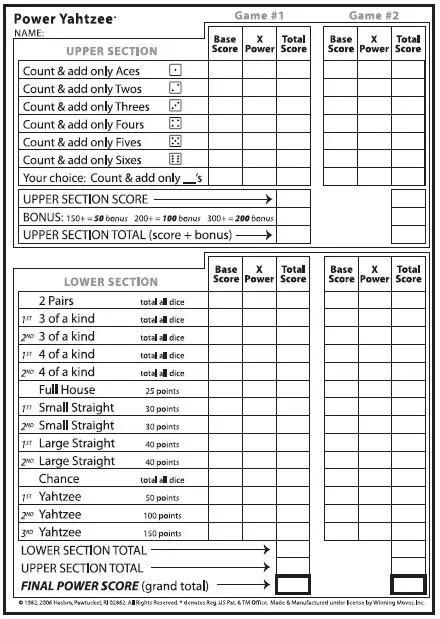 Offensive fouls are also counted as turnovers so make sure to ask referees what kind of fouls they are calling.
Offensive fouls are also counted as turnovers so make sure to ask referees what kind of fouls they are calling.
How To... Scorekeep a Basketball Game
The following information details the step by step procedure required to properly score and time a basketball game. The 'Timer' is responsible for the game clock, score board and possession arrow. The 'Scorer' is responsible for completing the score-sheet. Use the completed sample scoresheet along with the information provided below is also available at each gym site by the Gym Supervisor.
SCORE CLOCK OPERATOR
- Game Times. STOPPED TIME (game clock stops at every whistle) - Varsity / Juvenile Club (Rising Stars): 4 x 10 minute quarters; 5 minute overtime if necessary - Junior Varsity: 4 x 8 minute quarters; 4 minute overtime if necessary - Junior High / Middle School: 4 x 8 minute quarters; 4 minute overtime if necessary - Club or younger: 4 x 8 minute quarters; 4 minute overtime if necessary - RUNNING TIME (game clock runs throughout game including timeouts) - Community Club: 1st Half – 25 min ‘running’ time; 2nd Half – 22 min ‘running’ time; last 2 minutes being ‘stopped’ time.
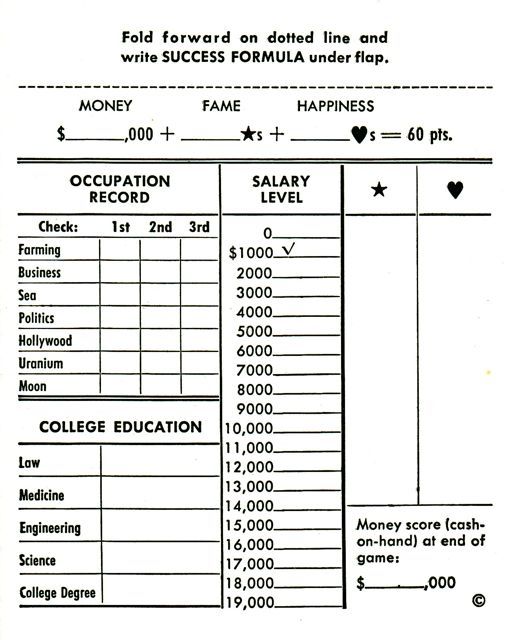
- Clock Operation. In ‘stopped’ time situations, start clock as referee drops hand (watch the referee that hands the ball into play) and stop clock at sound of all whistles - keep clock running after a score except if a field goal is scored in the last 2 minutes of the 4th quarter and the last 2 minutes of any overtime period including when the team scored upon requests a timeout. Keep hand on clock switch at all times.
- Possession Arrow. Point possession arrow to the basket of the team that loses the jump ball. Switch “possession arrow” after every jump ball situation.
- Scoring. Indicate on the score board one (1) point for every made free throw; two (2) points for every made field goal; three (3) points for every made 3-point field goal - watch the referee’s hands for what each shot is worth.
- Timeouts. Are requested through the scoretable. Granted to requesting team at the next whistle or if the requesting team is scored upon.
 Two (2) one minute timeouts in the first half; three (3) one minute timeouts in the second half per team. One (1) timeout per team per overtime period. No carryovers. Community Club games see two (2) one minute time outs for each team. None in the last five minutes. Sound the horn with 10 sec remaining in the 1 minute timeout.
Two (2) one minute timeouts in the first half; three (3) one minute timeouts in the second half per team. One (1) timeout per team per overtime period. No carryovers. Community Club games see two (2) one minute time outs for each team. None in the last five minutes. Sound the horn with 10 sec remaining in the 1 minute timeout. - Quarter Breaks. One to two minutes break (ask local host). Sound the horn with 30 sec remaining in the quarter break. Reset all bonus lights, team fouls.
- Halftime. Five (5) to ten (10) minutes. Ask game host. Reset all bonus lights, team fouls.
- Overtime. Games using 4 x 10 min quarters will use a five (5) minute overtime period; games using 4 x 8 min quarters will use a four (4) minute overtime period. One (1) minute break heading into each overtime period. The 4th quarter bonus situation carries over into all overtime periods.
Communicate with “scorer” at all times to ensure game score is correct
SCORESHEET
- Team Rosters.
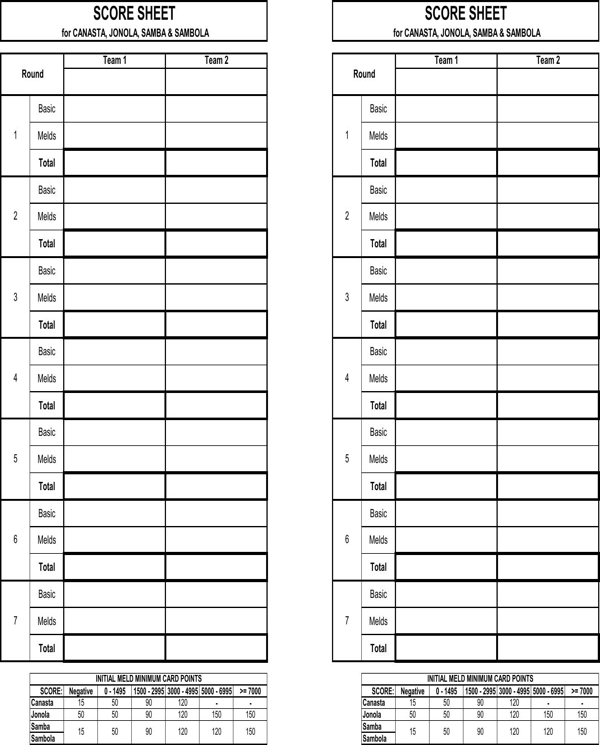 Have coaches complete the game rosters - full names and numbers! Include date, time & location (see reverse side for a sample).
Have coaches complete the game rosters - full names and numbers! Include date, time & location (see reverse side for a sample). - Scoring. Mark running score first with a slash “ / “ mark. Mark individual score second; “2” for a two-point score - “3” for a three-point score - full or empty circles to indicate made or missed free throws (1 point each)
- Personal Fouls. Record personal fouls as “|” in ‘player fouls’ box next to the corresponding name - 5 personal fouls = disqualification.
- Technical Fouls. Marked as “T” - go towards personal and team foul totals. Mark coach’s ‘T’s’ next to their names
- Timeouts. Are requested through the scoretable. Granted to requesting team at the next whistle or if the requesting team is scored upon. Record all time outs on sheet next to team’s name. Two (2) one minute timeouts in the first half; three (3) one minute timeouts in the second half per team.
 One (1) timeout per team per overtime period. No carryovers. Community Club games see two (2) one minute time outs for each team. None in the last five minutes.
One (1) timeout per team per overtime period. No carryovers. Community Club games see two (2) one minute time outs for each team. None in the last five minutes. - Team Bonus. After team reaches five (5) team fouls per quarter, other team is in ‘double bonus’ (2 shots). Notify referee by sounding horn. All team fouls reset going into the next quarter.
- Quarter and Halftime Breaks. Indicate what quarter and halftime scores are; separate 1st half team fouls by drawing long line down ‘fouls’ column; draw long ‘squiggle’ line down 1st half score box to prevent marking of 2nd half stats in 1st half columns.
- Overtime. Time-outs DO NOT carry over to the overtime period(s). Teams receive one timeout per overtime period (no carryover).
- End of Game. Total all scores and write in “winning team” and “final score”; total all the individual points; home team / tournament host keeps original white copy, give yellow to “winning team” and pink to “losing team”.
![]()
Communicate with “timer” at all times to ensure game score is correct
SHOTCLOCK OPERATOR
When a shot clock is being used in a game, the time shall be set at 24 seconds.
Start the Clock whenever a team gains control of a live ball on the playing court.
Stop the clock when…
- An official blows his whistle for a foul or violation.
- A ball on a shot for a field goal or on a pass enters the basket.
- A shot for a field goal touches the ring unless the ball lodges on the basket support.
- The game is stopped because of an action connected with the team not in control of the ball.
- The game is stopped because of an action not connected with either team, unless the opponents would be placed at a disadvantage.
Reset the clock to twenty-four (24) seconds with the display visible and restarted as soon as a team gains control of a live ball on the playing court.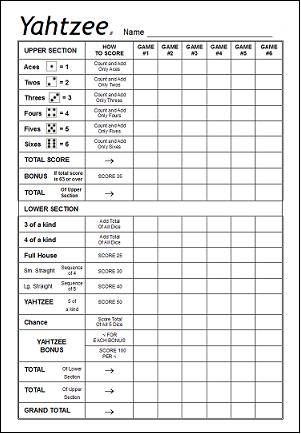 Note that the mere touching of the ball by an opponent does not start a new twenty-four second period if the other team remains in control of the ball.
Note that the mere touching of the ball by an opponent does not start a new twenty-four second period if the other team remains in control of the ball.
Stop clock, but NO reset when the same team that previously had control of the ball is awarded a throw-in as a result of:
- A ball having gone out-of-bounds.
- A player of the same team having been injured.
- A jump ball situation.
- A double foul.
- A cancellation of equal penalties against the teams. 50.4 Stopped,
Turn the clock off when a team gains control of a live ball on the playing court, and there are fewer than twenty-four (24) seconds remaining on the game clock in any period. Also note that the twenty-four second device signal does not stop the game clock or the game, nor cause the ball to become dead, unless a team is in a control of the ball.
MORE RESOURCES INCLUDING SCORESHEETS, SAMPLES AT. ..
..
Basketball rules: protocol. ⋆ Obasketbole.ru
Pic. 8 Protocol
B.1 The protocol shown in Fig. 8, approved by the FIBA Technical Commission.
B.2 It consists of 1 original and 3 copies on different colored paper.
Original on white paper intended for FIBA. The first copy on blue paper is for the host organization, the second copy on pink paper is for the winning team, and the last copy on yellow paper is for the losing team.
Note: 1. It is recommended that the scorer use 2 different colors of pens, one for the first and third periods and one for the second and fourth periods.
2. The protocol can be prepared and completed electronically.
B.3 Not later than 20 minutes before the start of the game the scorer must prepare the score sheet as follows:
B.3.1 He must record the names of both teams in the appropriate boxes at the top of the score sheet. Team ‘A’ is always recorded as the local team (host team) or the team listed first on the schedule (for tournaments or games played on a neutral playing ground). The other command is command 'B' .
Team ‘A’ is always recorded as the local team (host team) or the team listed first on the schedule (for tournaments or games played on a neutral playing ground). The other command is command 'B' .
B.3.2 Then the scorer should write down:
• Name of the competition.
• Serial number of the game.
• Date, time and place of the game.
• Names of the chief judge and judge(s).
9 Protocol header
B.3.3 Command 'A' is at the top of the protocol, and command 'B' is
at the bottom.
B.3.3.1 In the first column, the scorer must record the license number (last 3 digits) of each player. For tournaments, a player's license number is only shown for the first game of their team.
B.3.3.2 In the second column, the scorer must PRINT the name and initials of each player in jersey order, using the list of team members provided by the coach or his representative. The team captain is indicated by the entry (CAP.) immediately after his last name.
The team captain is indicated by the entry (CAP.) immediately after his last name.
B.3.3.3 If the team is represented by less than 12 players, the scorer must cross out the empty columns in the score sheet.
B.3.4 At the bottom of the section for each team, the scorer should enter (PRINT) the names of the team's coach and assistant coach.
B.4 Not later than 10 minutes before the start of the game both coaches must:
B.4.1 Confirm their agreement with the names and corresponding numbers of their team members.
B.4.2 Confirm the names of the coach and assistant coach.
B.4.3 Specify the 5 players who should start the game by placing a small ‘x’ next to the player’s number in the ‘Ac. in Game'.
B.4.4 Sign the protocol.
Team ‘A’ coach must be the first to provide this information.
B.5 At the start of the game the scorer must circle an ‘x’ for the 5 players of each team who start the game.
B.6 During the game the scorer must place a small ‘x’ next to the player’s number in the ‘Ac. in game’, without circling him, when the substitute first enters the game as a player.
Fig. 10 Teams on the score sheet
B.7 Time-outs
B.7.1 Time-outs granted must be recorded on the score sheet by entering the minute of playing time of the period or extra period in the appropriate boxes below the team names.
B.7.2 At the end of each half and extra period, 2 parallel horizontal lines are drawn inside the unused cells. In the event that a team is not granted its first time-out before the last 2 minutes of the second half, the scorer shall draw 2 horizontal lines in the first box for the second half of that team.
B.8 Fouls
B.8.1 A player's fouls may be personal, technical, unsportsmanlike or disqualifying and must be entered against the player's last name.
B.8.2 Team bench fouls may be technical or disqualifying fouls and must be recorded against the coach's name.
B.8.3 All fouls shall be recorded as follows:
B.8.3.1 A personal foul is indicated by the entry of the letter 'P'.
B.8.3.2 A technical foul against a player is indicated by writing a 'T'. A second technical foul is also indicated by writing a 'T' followed by a 'GD' disqualification for that game in the next box.
B.8.3.3 A technical foul against a coach for personal unsportsmanlike conduct is indicated by the entry of the letter 'C'. A second such technical foul is also indicated by writing 'C' followed by 'GD' in the next box.
B.8.3.4 A technical foul against a coach for any other reason is indicated by the entry of the letter 'B'. A third technical foul (one of which may be 'C') is indicated by writing the letter 'B' or 'C' followed by 'GD' in the next box.
B.8.3.5 An unsportsmanlike foul against a player is indicated by writing a 'U'. A second unsportsmanlike foul is also indicated by writing 'U' followed by 'GD' in the next box.
B.8.3.6 A disqualifying foul is indicated by writing the letter ‘D’.
B.8.3.7 Any foul incurring a penalty of free throw(s) is indicated by adding a subscript with a number corresponding to the number of free throws (1, 2 or 3) adjacent with 'P', 'T', 'C', 'B', 'U' or 'D'.
B.8.3.8 All fouls against both teams attracting penalties of the same severity and offset in accordance with Art. 42 shall be indicated by adding a small letter 'c' next to 'P', 'T', 'C', 'B', 'U' or 'D'.
B.8.3.9 At the end of each period, the scorer must draw a thick line separating the used spaces from those that remain unused.
At the end of playing time, the scorer must cross out the remaining empty cells with a bold horizontal line.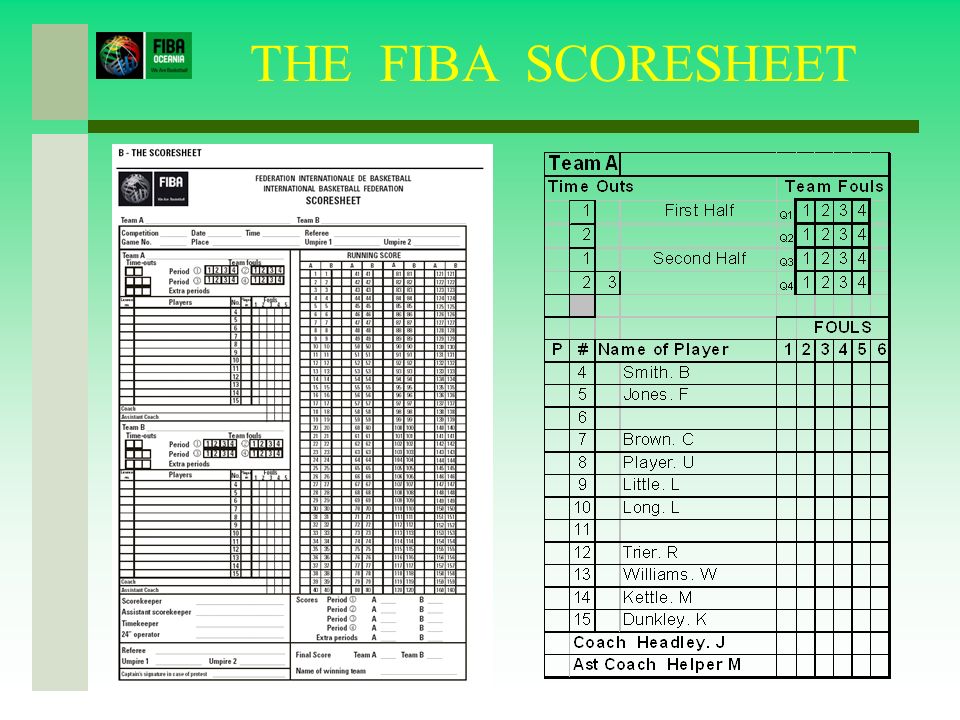
B.8.3.10 Examples of disqualifying fouls to persons on the command bench:
Dispensing folus is recorded as follows:
Dispensing foul assistant to the assistant to the assistant as the following:
Discalitable foller to the excluded player after the fifth foul is recorded as follows:
AND
B.8.3.11 Examples of disqualifying fouls (Fighting):
Disqualifying fouls against team bench personnel for leaving the team bench area (Art. 39) must be filed as follows. An 'F' shall be entered in all remaining Inequalified Person foul spaces.
If only the coach is disqualified:
If only the assistant coach is disqualified:
If both coach and assistant coach are disqualified:
If the substitute has fewer than 4 fouls then an 'F' must be entered in all remaining foul spaces:
If this is the substitute's fifth foul then an 'F' must be entered inside the last foul space:
If the excluded player has already committed 5 fouls (left the playing court) then the letter 'F' shall be entered in the column after the last foul: foul:
Note: Technical or disqualifying fouls under Art. 39 are not considered team fouls.
39 are not considered team fouls.
B.9 Team fouls
B.9.1 For each period, there are 4 spaces on the scoresheet (below the team name and above the names of the players) to record team fouls.
B.9.2 Whenever a player commits a personal, technical, unsportsmanlike or disqualifying foul, the scorer shall record the foul on that player's team by crossing out the corresponding boxes in turn with a large 'X'.
B.10 Current score
B.10.1 The scorer must record the chronological change in the total number of points scored by each team.
B.10.2 There are 4 columns in the protocol for changing the score.
B.10.3 Each column is divided into 4 vertical columns. The 2 columns on the left are for the 'A' team, and the 2 columns on the right are for the 'B' team. The central columns are reserved for the current score (160 points) for each of the teams.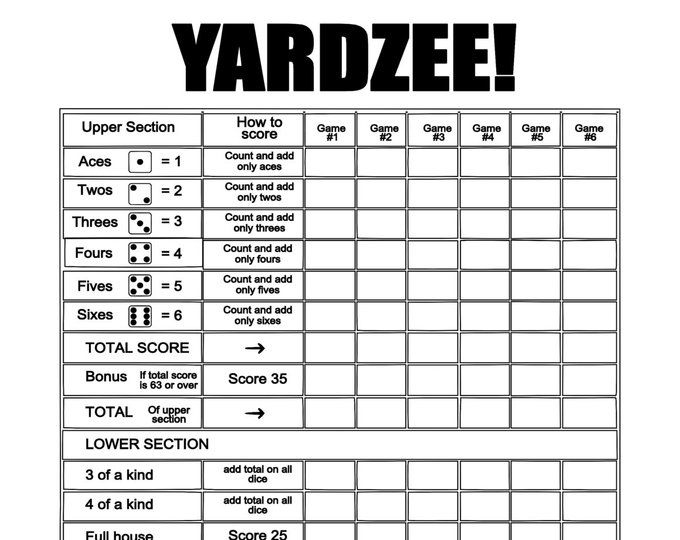
The scorer must:
• First draw a diagonal line '/' for any valid field goal and a dark circle '●' for any valid free throw made over of the new total points for the team that threw the ball.
• Then in the empty cell on the same side where the new total number of points is marked (next to the new '/' or '●' sign), write down the number of the player who scored the ball from the field or free throw.
B.11 Current Score: Additional Instructions
B.11.1 A 3-point field goal must be marked with a circle around the player's number.
B.11.2 A field goal accidentally scored by a player in his own basket is recorded as field goal by the captain of the opposing team on the playing court.
B.11.3 The points scored when the ball does not enter the basket (Art. 31) must be credited to the player who took the throw.
B.11.4 At the end of each period, the scorer shall draw a bold circle ' o ' ' ' o ' ' the final number of points scored by each team, and then draw a bold horizontal line under these scores and under the numbers of the last players scored .
B.11.5 At the beginning of each period, the scorer continues to mark the score in chronological order from where he left off.
B.11.6 Whenever possible, the secretary should check the current score on the score sheet with the scoreboard. If there is a discrepancy and his score is correct, the scorer must immediately take steps to correct the scoreboard. If there is any doubt or one of the teams disagrees with the correction, the scorer must inform the referee as soon as the ball becomes dead and the game clock stops.
B.12 Current account: Summing up
B.12.1 At the end of each period, the secretary must record the score of this period in the appropriate column at the bottom of the protocol.
Fig. 12 Summing up
B.12.2 At the end of the game, the scorer draws 2 thick horizontal lines under the total number of points scored by each team, as well as the numbers of the players who scored the last points.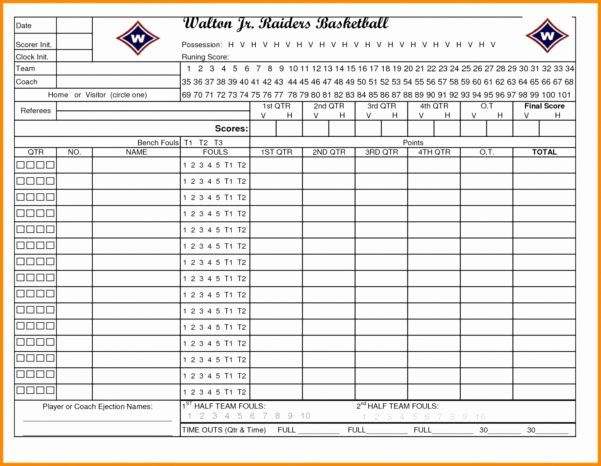 He must also draw a diagonal line to the end of the column, crossing out the remaining numbers (current score) for each team.
He must also draw a diagonal line to the end of the column, crossing out the remaining numbers (current score) for each team.
B.12.3 At the end of the game, the scorer must record the final score and the name of the winning team.
B.12.4 The scorer shall then print his or her name on the score sheet after the assistant scorer, timekeeper and shot clock have done so.
B.12.5 After the score sheet has been signed by the referee(s), the chief referee must be the last to approve and sign it. This action means the end of the game jurisdiction of the referees and their connection with the game.
Note : In the event that one of the captains (CAP.) signs the score sheet in connection with a protest (in the column 'Signature of the captain in case of protest'), the table officials and the referee(s) must remain at the disposal of the chief referee until he gives them permission to leave.
Fig. 13 Lower part of the protocol
Basketball: history, rules, inventory, court
Basketball (from English basket - basket, ball - ball) - an Olympic sport, a sports team game with a ball, in which the goal is to throw the ball into the opponent's basket more times than the opposing team does at the set time. Each team consists of 5 field players.
Contents
- The history of the emergence and development of basketball
- Basketball rules (briefly)
- Basketball field
- Basketball
- Basketball hoop and backboard dimensions
- Refereeing in basketball
- Basketball Federation
The history of the emergence and development of basketball
In 1891, in the United States of America, a young teacher, a native of Canada, Dr. James Naismith, trying to "revive" gymnastics lessons, attached two fruit baskets to the railing of the balcony and suggested throwing soccer balls into it. The resulting game only remotely resembled modern basketball. There was no question of any management, the players threw the ball to each other and then tried to throw it into the basket. The team that scored the most goals won.
The resulting game only remotely resembled modern basketball. There was no question of any management, the players threw the ball to each other and then tried to throw it into the basket. The team that scored the most goals won.
A year later, Naismith developed the first rules of basketball. The very first matches under these rules caused their first changes.
Gradually, basketball from the United States penetrated first to the East - Japan, China, the Philippines, and then to Europe and South America. After 10 years at the Olympic Games in St. Louis, the Americans organized a demonstration tour between the teams of several cities. The Basketball Association of America (BAA) was formed in 1946. The first match under her auspices took place on November 1 of the same year in Toronto between the Toronto Huskies and New York Knickerbockers. At 19In 1949, the association merged with the US National Basketball League to form the National Basketball Association (NBA). In 1967, the American Basketball Association was created, which for a long time tried to compete with the NBA, but merged with it 9 years later. Today, the NBA is one of the most influential and well-known professional basketball leagues in the world.
In 1967, the American Basketball Association was created, which for a long time tried to compete with the NBA, but merged with it 9 years later. Today, the NBA is one of the most influential and well-known professional basketball leagues in the world.
The International Amateur Basketball Federation was founded in 1932. The federation includes 8 countries: Argentina, Greece, Italy, Latvia, Portugal, Romania. Sweden, Czechoslovakia. Based on the name, it was assumed that the organization would only lead amateur basketball, however, at 1989, professional basketball players received admission to international competitions, and the word "amateur" was removed from the name.
The very first international match took place in 1904, and in 1936 basketball entered the program of the Summer Olympic Games.
Basketball rules (briefly)
The rules of the game of basketball changed several times until 2004, when the final version of the rules took shape, which is considered relevant to this day.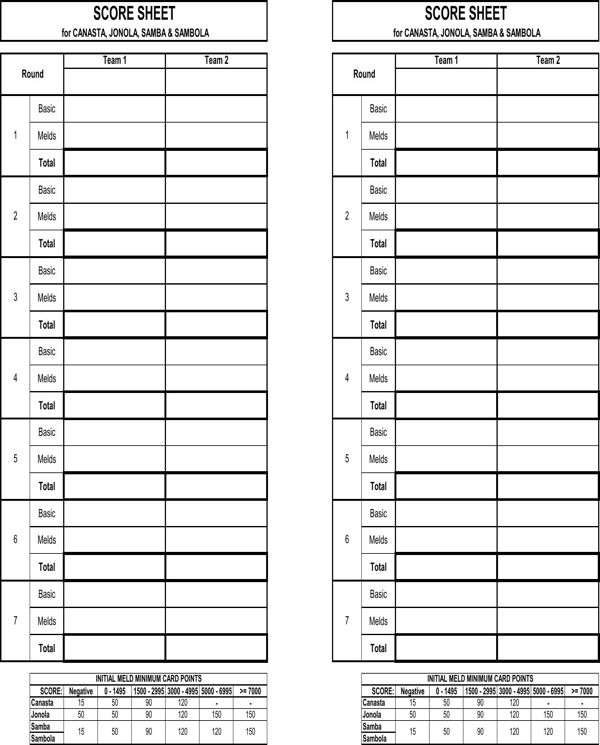
- Basketball is played by two teams. Usually a team consists of 12 people, 5 of which are field players, and the rest are considered substitutes.
- Basketball dribbling . Athletes in possession of the ball must move around the field, hitting the floor with it. Otherwise, "carrying the ball" will be counted, and this is a violation of the rules in basketball. Accidentally touching the ball with a body part other than the hand is not considered a foul, unlike purposeful play with the foot or fist.
- A basketball game consists of 4 periods or halves, but the time of each half (play time) varies depending on the basketball association. So, for example, in NBA a match consists of 4 halves of 12 minutes each, and in FIBA each such half lasts 10 minutes.
- Short breaks are provided between periods, and between the second and third periods, the break time is increased.
- The ball thrown into the basket can bring a different number of points to its team.
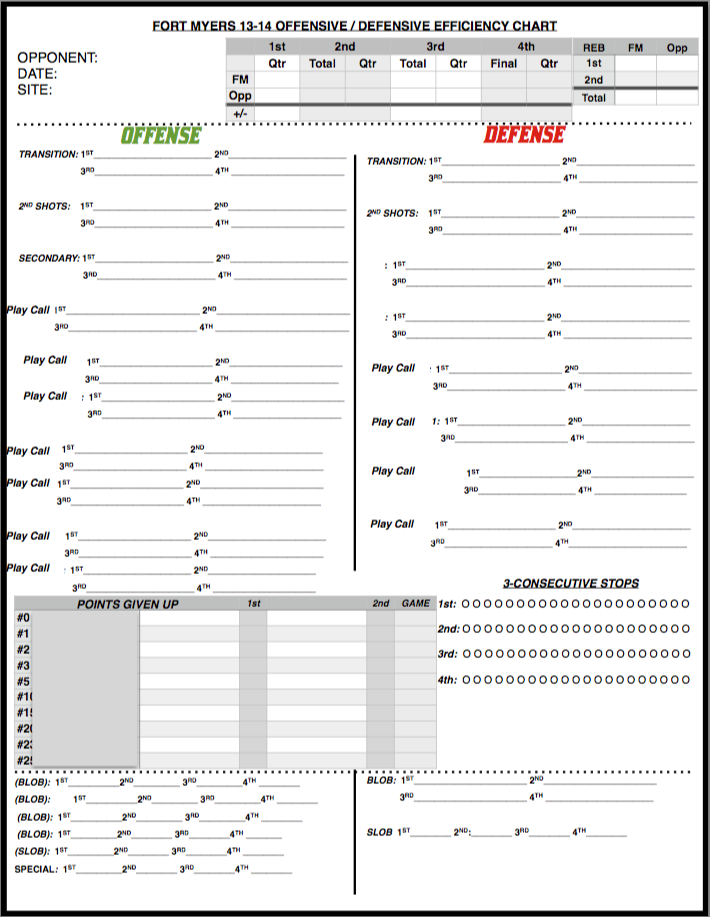 If the ball is scored during the free throw, the team earns 1 point. If the ball is thrown from an average or close distance (closer than the 3-point line), then the team is given 2 points. A team earns three points if the ball is scored from behind the three-point line.
If the ball is scored during the free throw, the team earns 1 point. If the ball is thrown from an average or close distance (closer than the 3-point line), then the team is given 2 points. A team earns three points if the ball is scored from behind the three-point line. - If in regular time both teams scored the same number of points, then a 5-minute overtime is assigned, if it ended in a draw, then the next one is assigned and so on until the winner is determined.
- 3 Second Rule - A rule that prohibits any player from the attacking team from being in the free throw area for more than three seconds.
- Basketball Two Step Rule . The player is only allowed to take two steps with the ball, after which he must either shoot or pass.
Basketball field
The playing field for basketball has a rectangular shape and a hard surface. The surface of the site must not have any bends, cracks or any other deformations.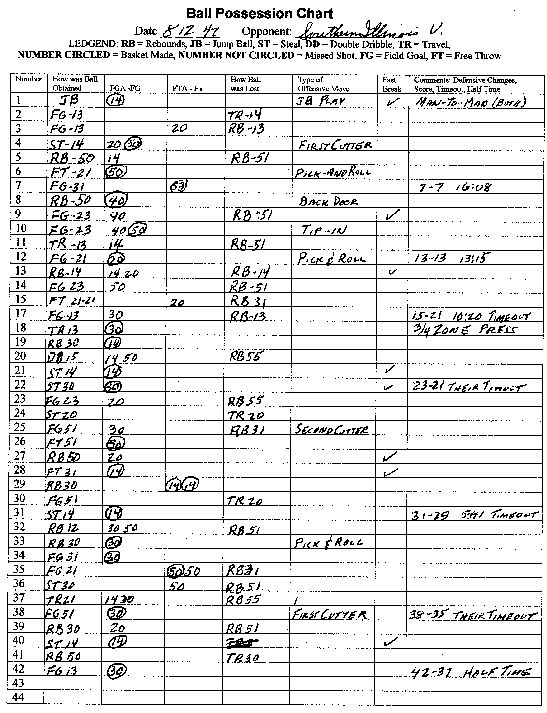 The size of the basketball court must be 28 meters long and 15 meters wide (standard). The height of the ceiling must be at least 7 meters, and on professional sites, ceilings are raised to a height of 12 meters and above. The lighting on the field must be designed so as not to interfere with the movement of the players and must evenly cover the entire court.
The size of the basketball court must be 28 meters long and 15 meters wide (standard). The height of the ceiling must be at least 7 meters, and on professional sites, ceilings are raised to a height of 12 meters and above. The lighting on the field must be designed so as not to interfere with the movement of the players and must evenly cover the entire court.
Until the end of the 60s, tournaments could be organized outdoors. However, now basketball games are played only in closed areas.
Site marking
- limit lines. Pass along the entire perimeter of the site (2 short front lines and 2 long side lines).
- Central line. It is drawn from one side line to another and at the same time it is parallel to the front lines.
- The central zone is a circle (radius 1.80 m) and is located exactly in the center of the basketball field.
- Three-point lines are semi-circles with a radius of 6.75 m, drawn to the intersection with parallel (front) lines.

- Free throw lines. The free-throw line is drawn 3.60 m long parallel to each end line so that its far edge is located at a distance of 5.80 meters from the inside edge of the end line, and its middle is on an imaginary line connecting the midpoints of both end lines.
Basketball
The basketball is spherical, painted an approved shade of orange, and has a pattern of eight inlays and black stitching.
| Basketball size | Circumference, mm | Weight, g |
| Size 7 | 750-780 | 567-650 |
| Size 6 | 720-740 | 500-540 |
| Size 5 | 690-710 | 470-500 |
| Size 3 | 560-580 | 300-330 |
Basketball hoop and backboard dimensions
The height of the basketball hoop from the floor level is 3.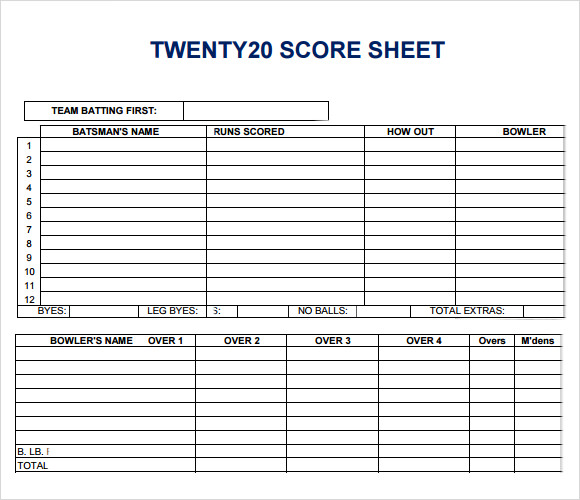 05 meters (standard). The diameter of the basketball hoop ranges from 45 cm to 45.7 cm. The ring itself must be painted bright orange. A special net with a length of 40-45 cm is attached to the ring. The basketball hoop is located at a distance of 15 cm from the backboard.
05 meters (standard). The diameter of the basketball hoop ranges from 45 cm to 45.7 cm. The ring itself must be painted bright orange. A special net with a length of 40-45 cm is attached to the ring. The basketball hoop is located at a distance of 15 cm from the backboard.
The shield to which the ring is attached also has a number of important parameters. Basketball backboard size: width - 1.8 m, height - 1.05 m. Modern basketball backboards are made of tempered glass.
Refereeing in basketball
At the basketball game there are:
- senior judge and judge;
- timekeeper;
- secretary;
- assistant secretary;
- operator 30 seconds.
Judge uniform:
- gray shirt;
- long black trousers;
- black basketball shoes.
Basketball Federation
- International Basketball Federation (FR. Fédération Internationale de Basketball, FIBA).
